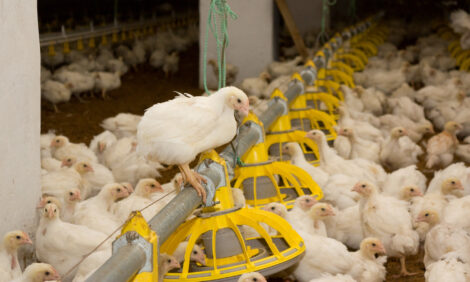



Viral shedding of avian influenza in ducks
Ducks are known to shed high amounts of the virus in the early stagesEditor's note: The following is from a presentation by Jean-Luc Guerin and colleagues, University of Toulouse, France and Autonomous University of Barcelona, Bellaterra, Spain, during the 2024 annual conference of the American Association of Avian Pathologists.
High pathogenicity avian influenza viruses (HPAIVs) have caused major epizootics in the last years with devastating consequences for poultry and wildlife worldwide. Domestic and wild ducks can be highly susceptible to HPAIVs, and infection leads to efficient viral replication and massive shedding (high titers for an extended time), contributing to widespread viral dissemination.
Ducks are known to shed high amounts of virus in the earliest phase of infection, but the dynamics and impact of environmental contamination in the epidemiology of HPAIV outbreaks is poorly understood. In a study, we monitored mule ducks experimentally infected with two H5N8 clade 2.3.4.4b HPAIVs sampled in France in the 2016-2017 and 2020-2021 epizootics.
We investigated viral shedding dynamics in oropharynx, cloaca, conjunctiva, and feathers; bird-to-bird viral transmission; and the role of the environment in viral spread and as sampling strategy for early detection and surveillance. Our findings confirmed that viral shedding started before the onset of clinical signs; as early as one day post-inoculation (dpi) or post-contact exposure, then peaked at 4 dpi, and lasted for 14 dpi.
Detection of viral RNA in
aerosols, dust, and water samples mirrored viral shedding dynamics, and viral
isolation from these environmental samples was successful all throughout the
experiment. Our results confirmed that mule ducks can shed high HPAIV titers
through various excretion routes while being asymptomatic, and that
environmental sampling could be a non-invasive tool for early viral RNA
detection in HPAIV infected farms.
Dust sampling for HPAI
There are many possible lines
of research to improve the efficiency of dust sampling: one of the main
drawbacks is that dust may contain organic substances that can inhibit RT-qPCR
reactions. To limit this inhibition, we tested the use of bovine serum albumin
(BSA), a molecule known to facilitate DNA polymerization in the presence of
numerous inhibitors, including those from feces, litter or food.
Dust samples were collected on
107 farms localized in areas affected by epizootics of clade 2.3.4.4b HPAIV
H5N8. Our results indicate that the addition of BSA to the RT-qPCR reaction mix
improved significantly the sensitivity of the method. The use of BSA could be
routinely implemented in HPAIV dust monitoring RT-qPCR protocols. These
results, combined with previous field observations, suggest that dust sampling
may represent a relevant alternative to tracheal or cloacal swabbing, as it is
cheap, non-invasive for animals, simpler and quicker to carry out.










